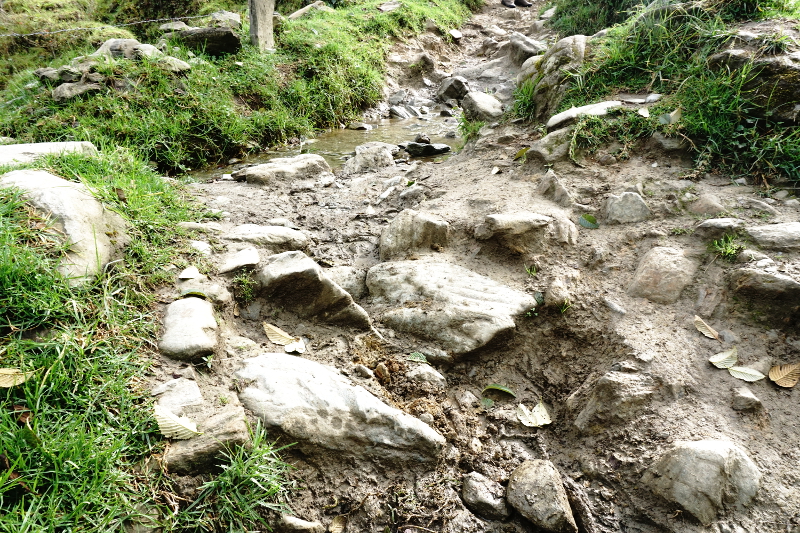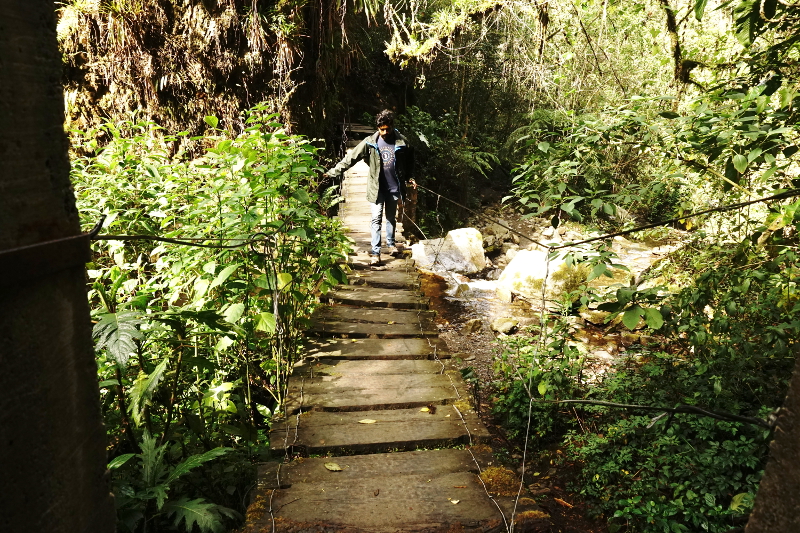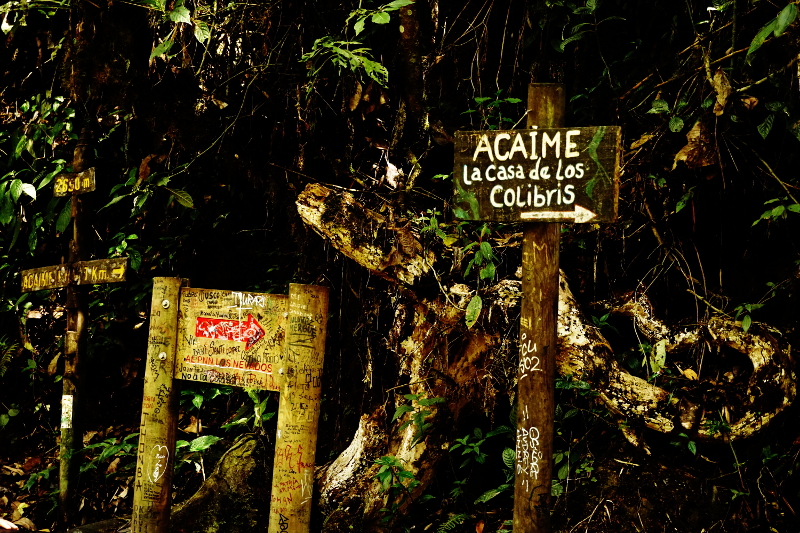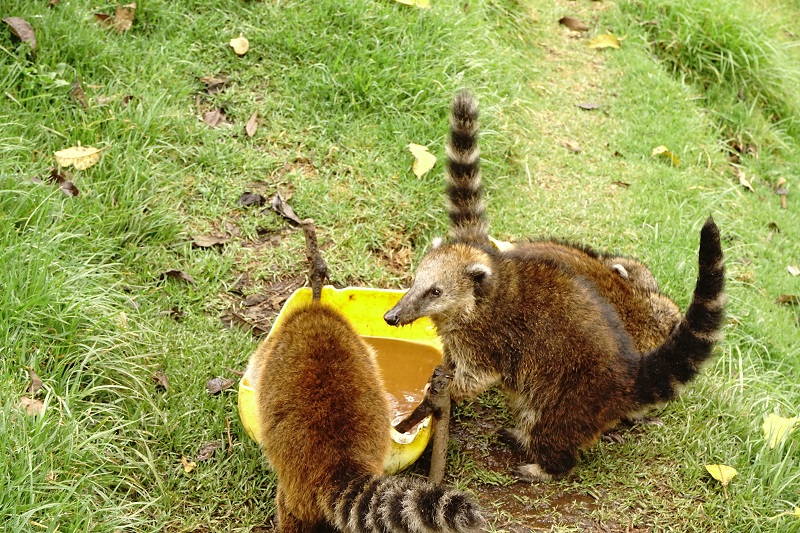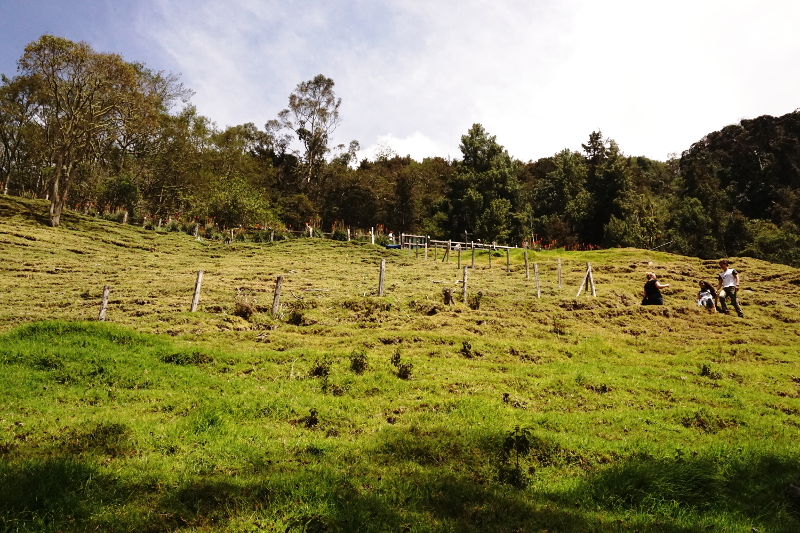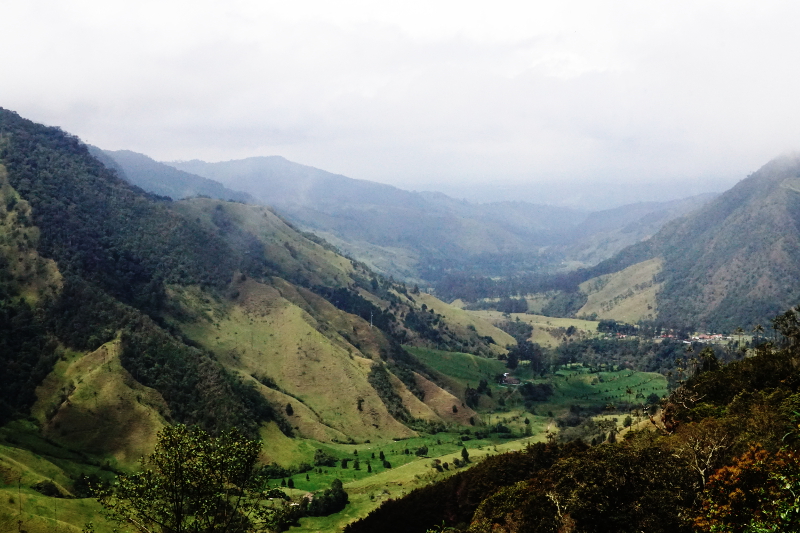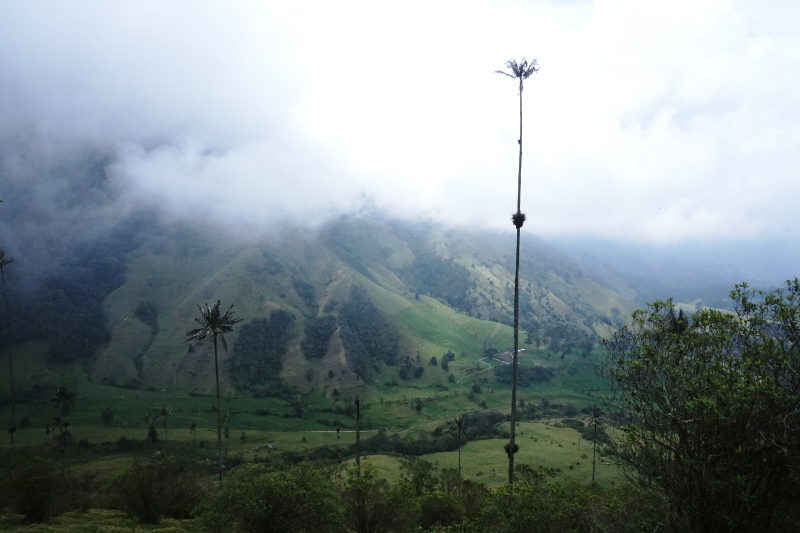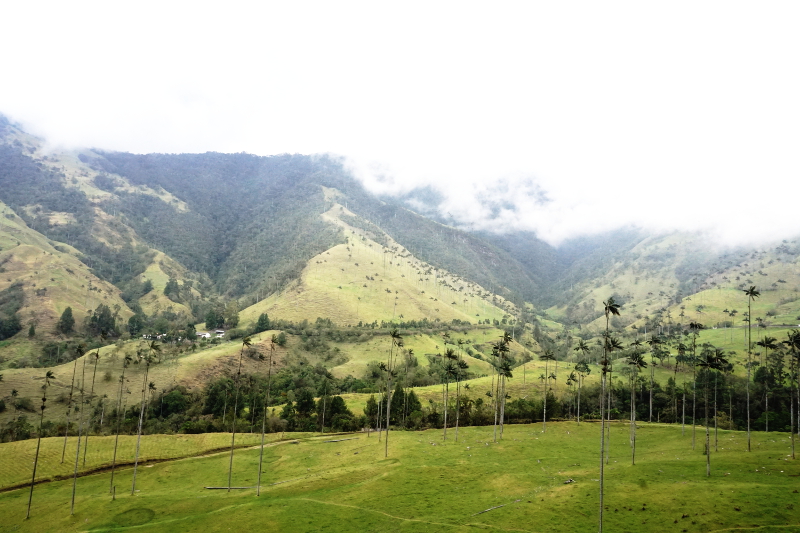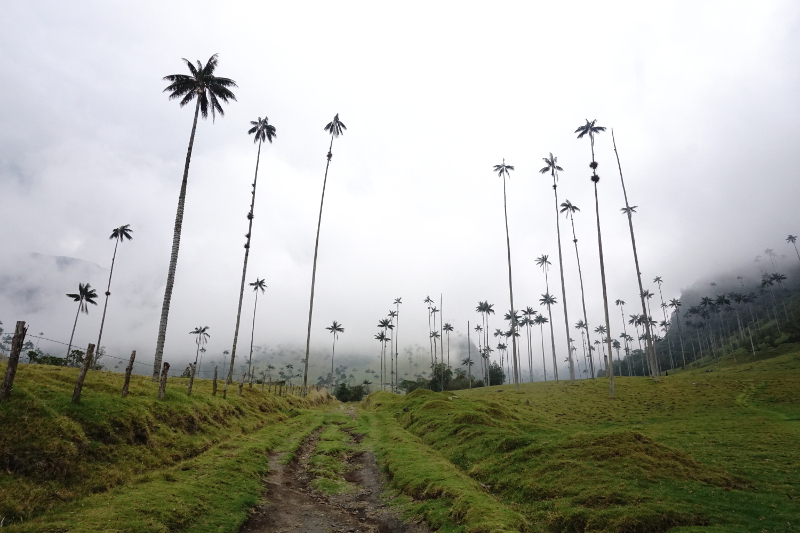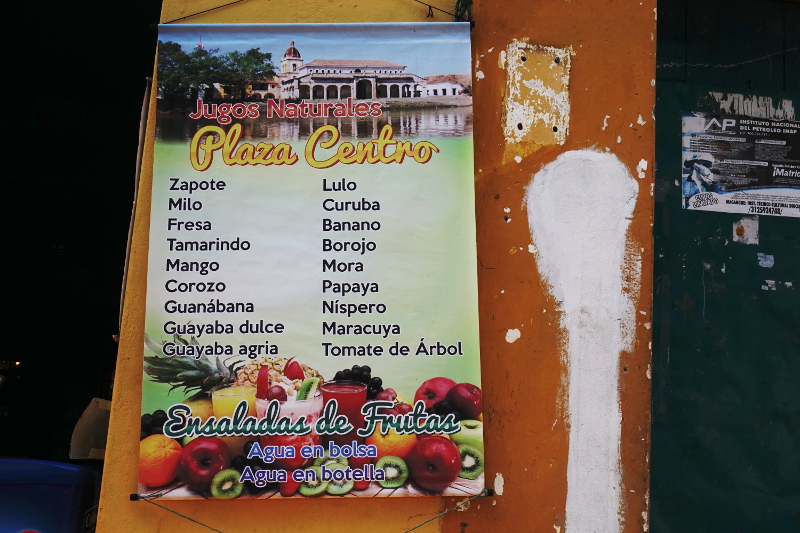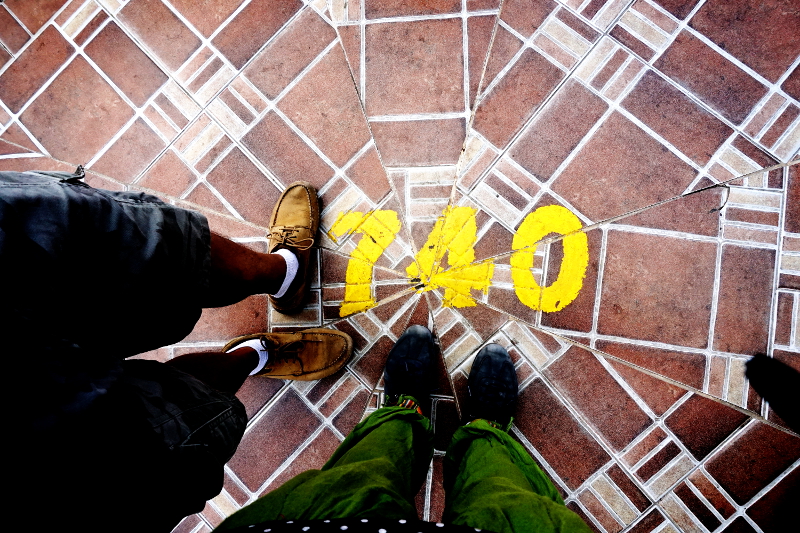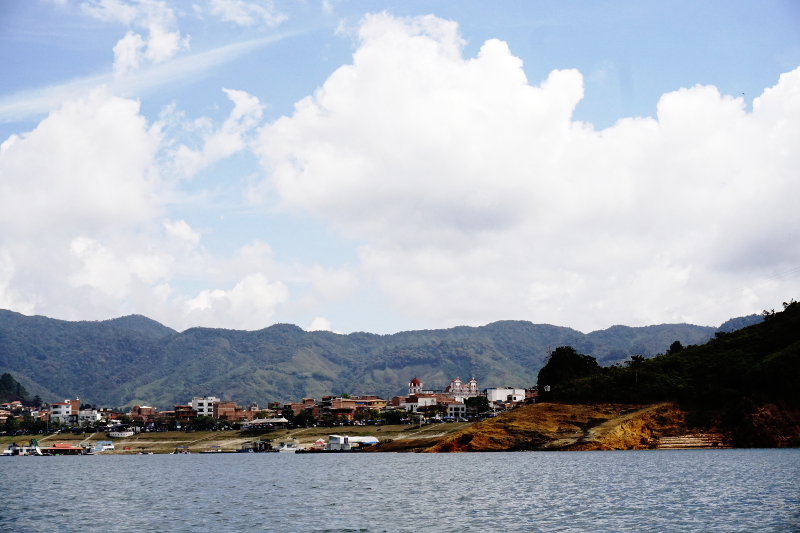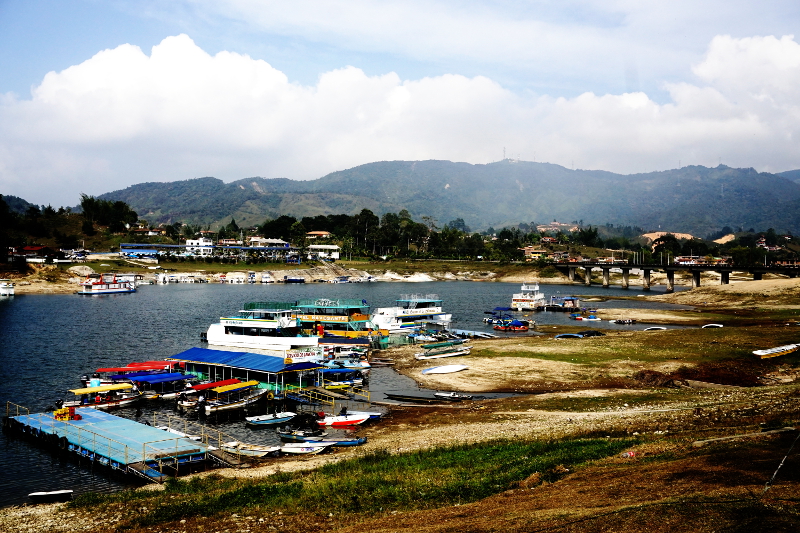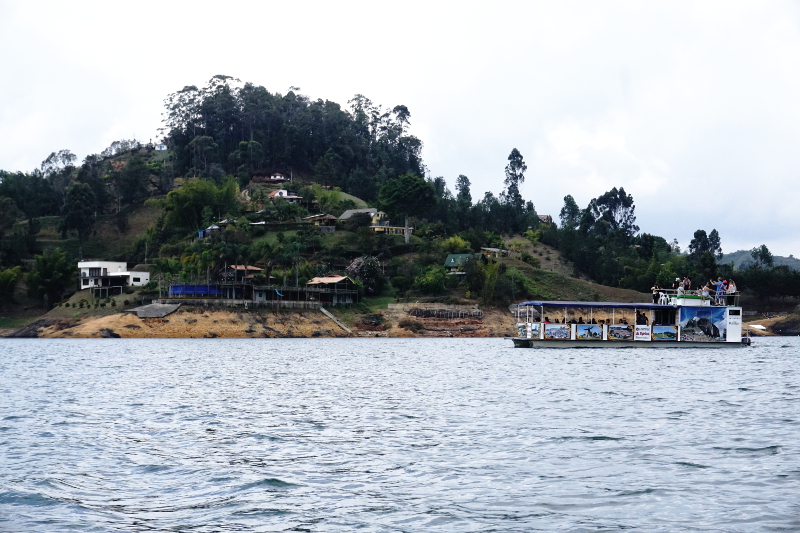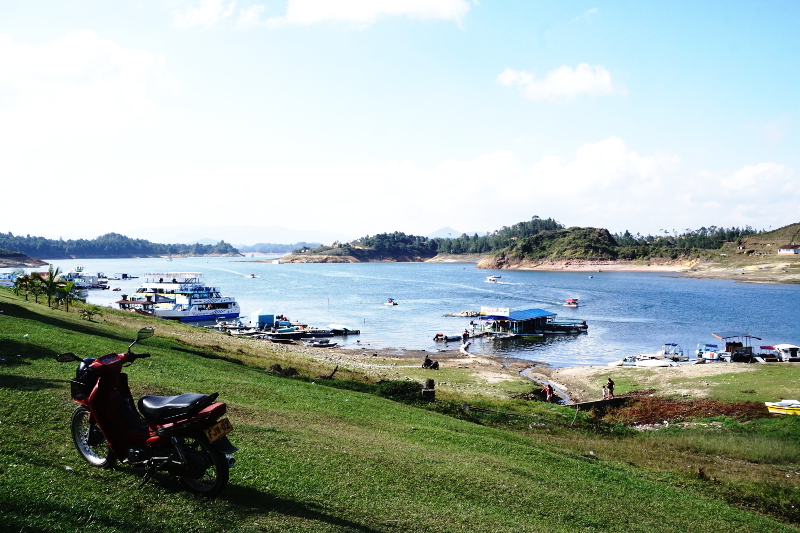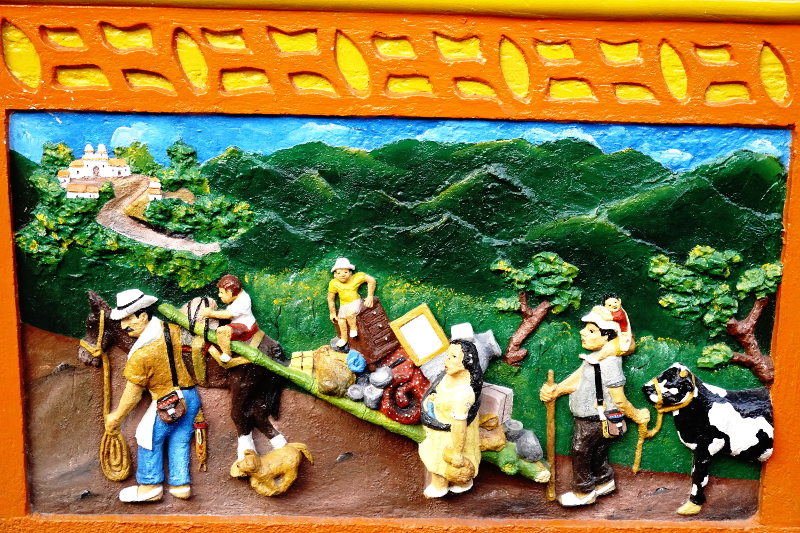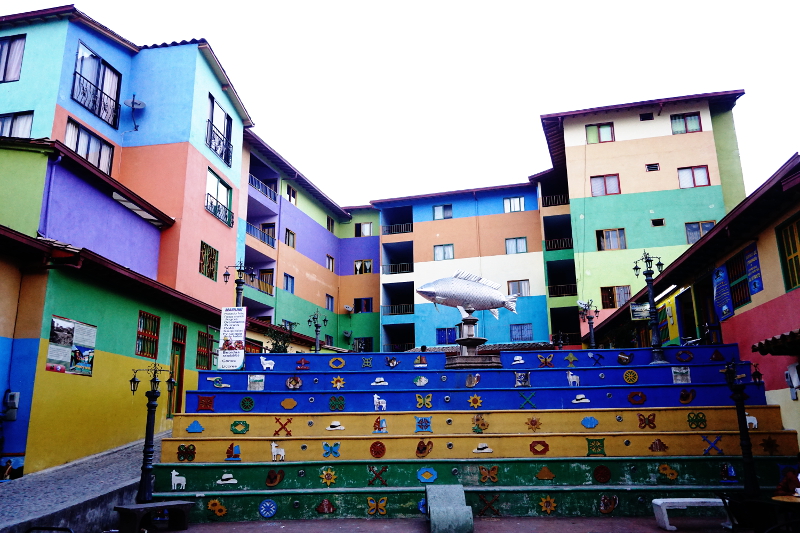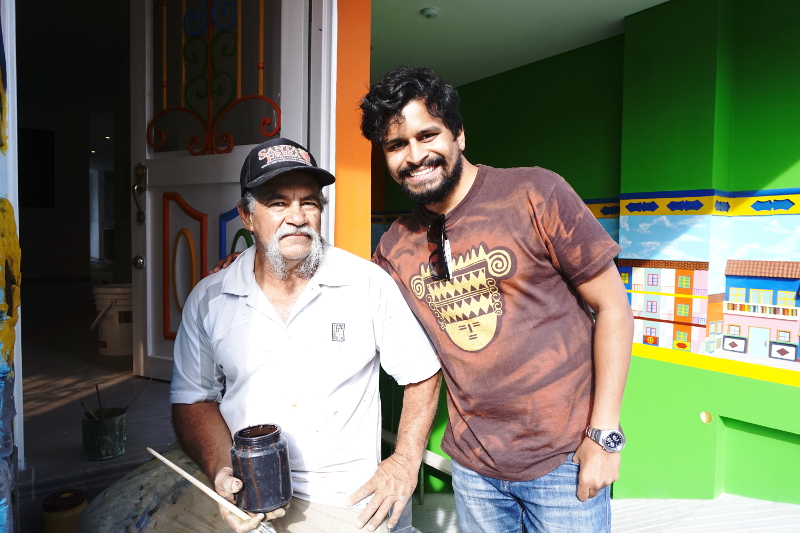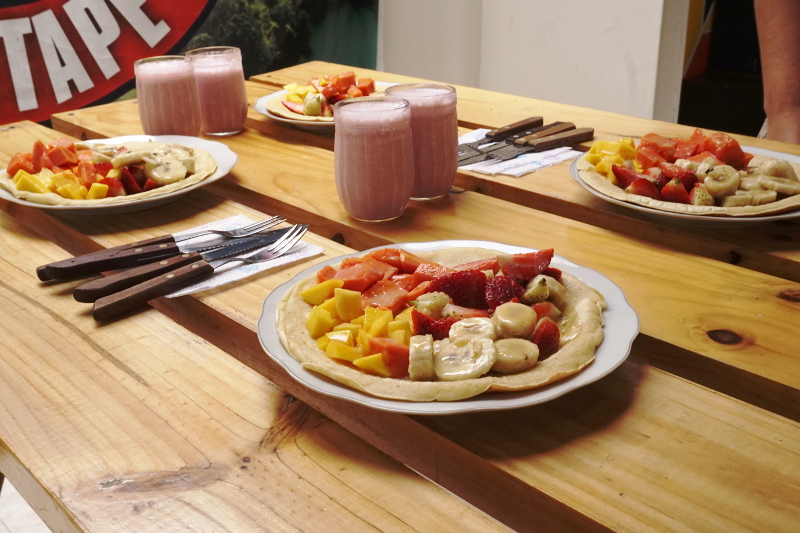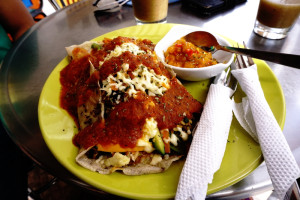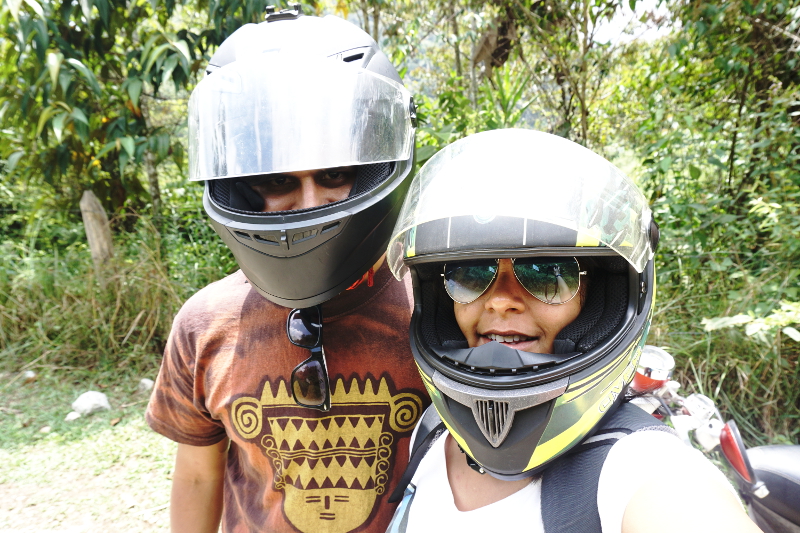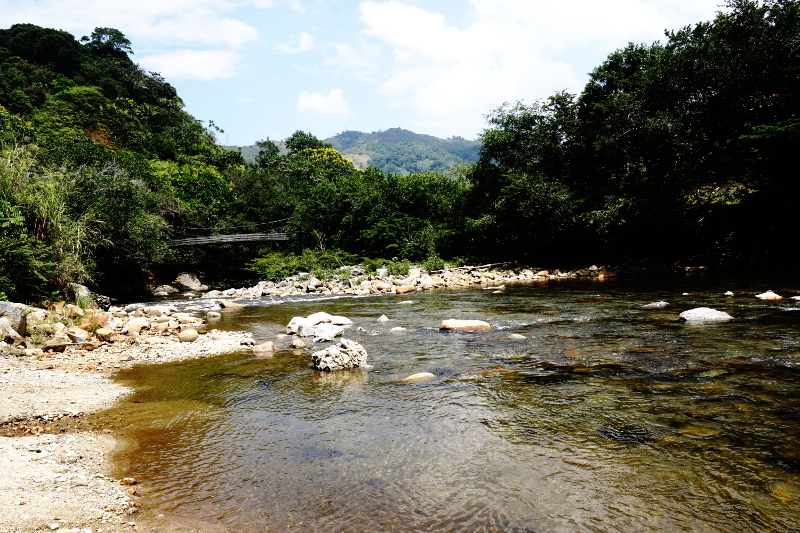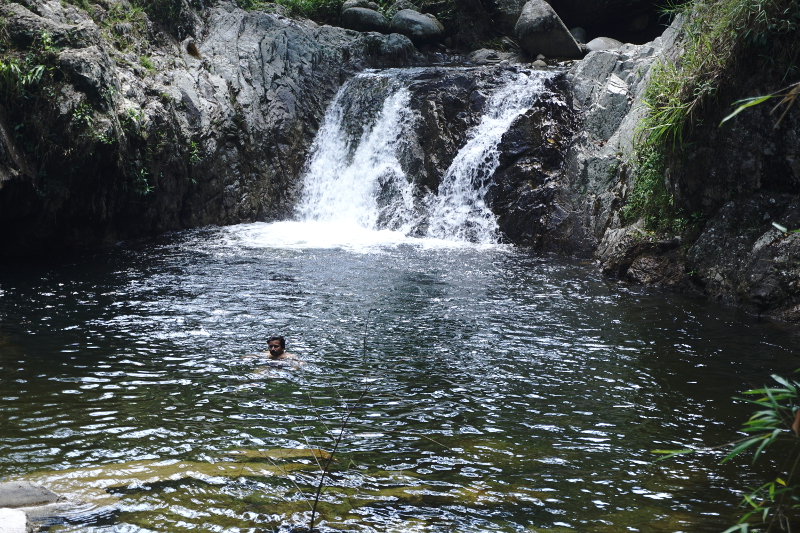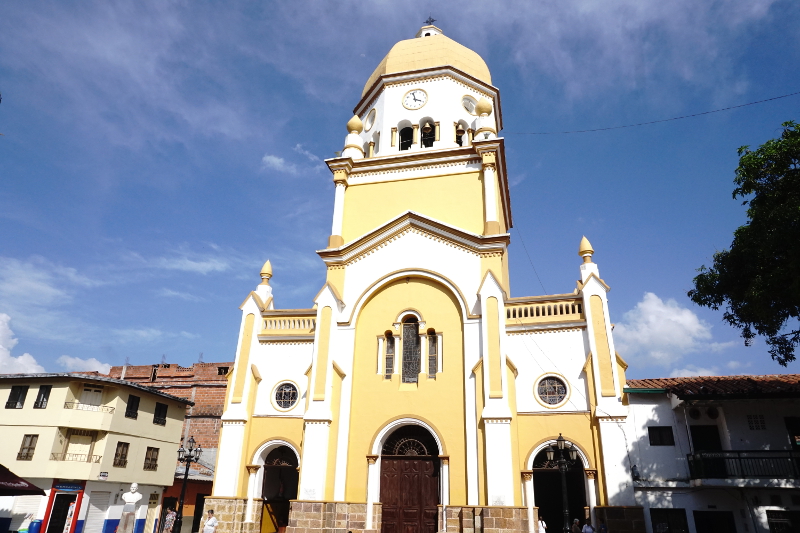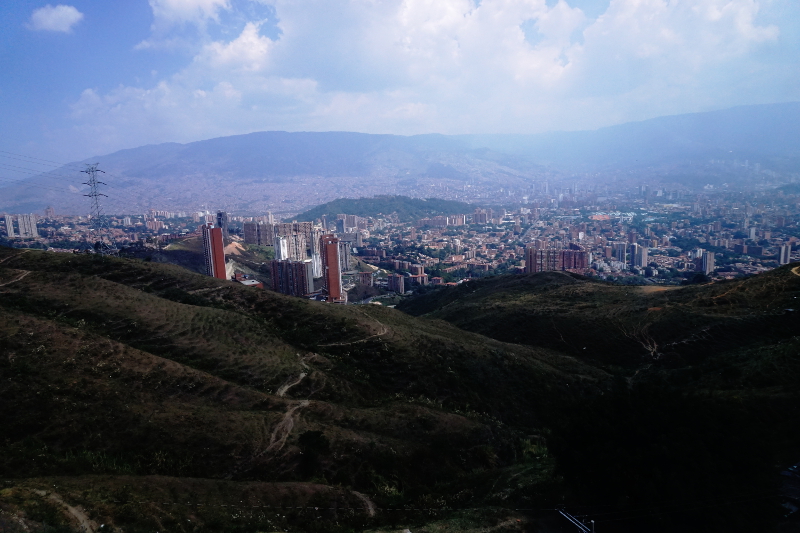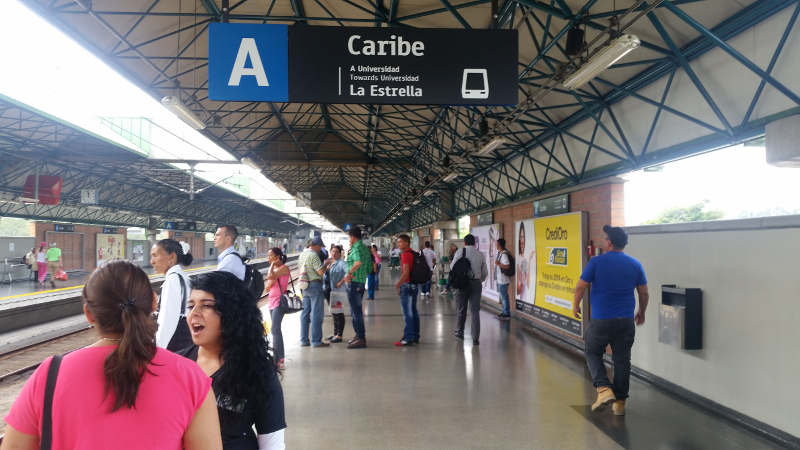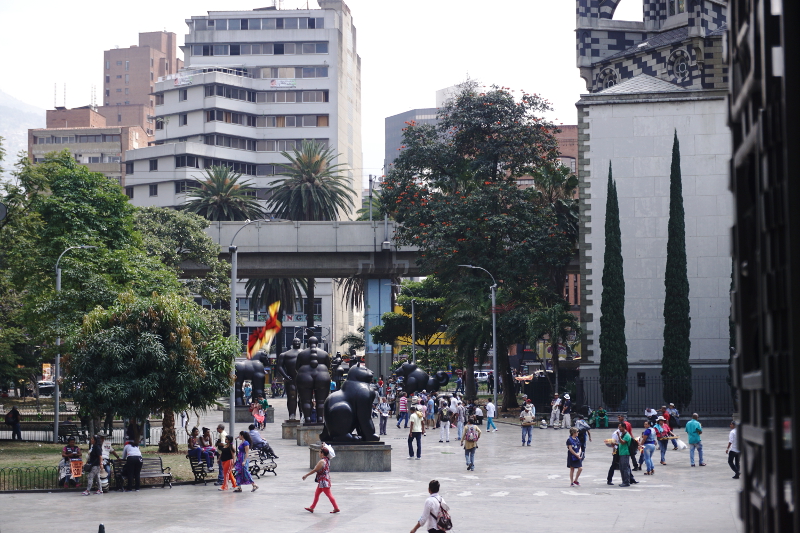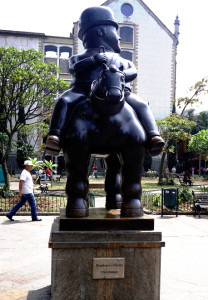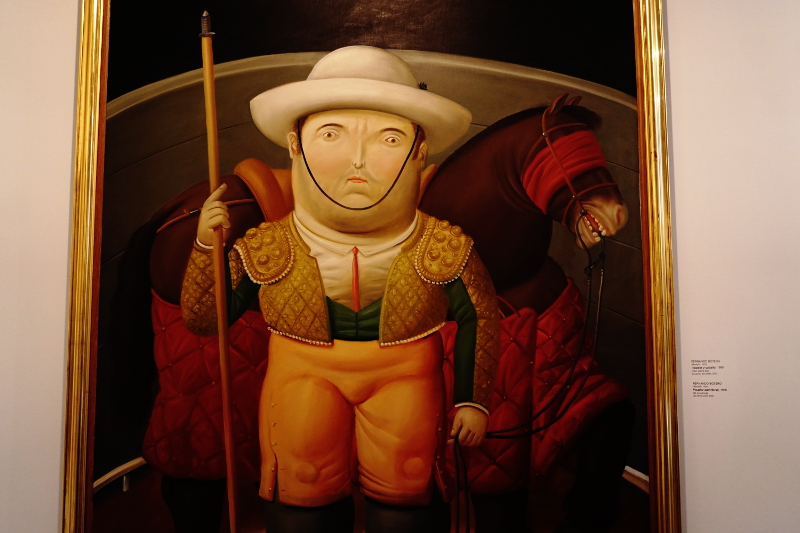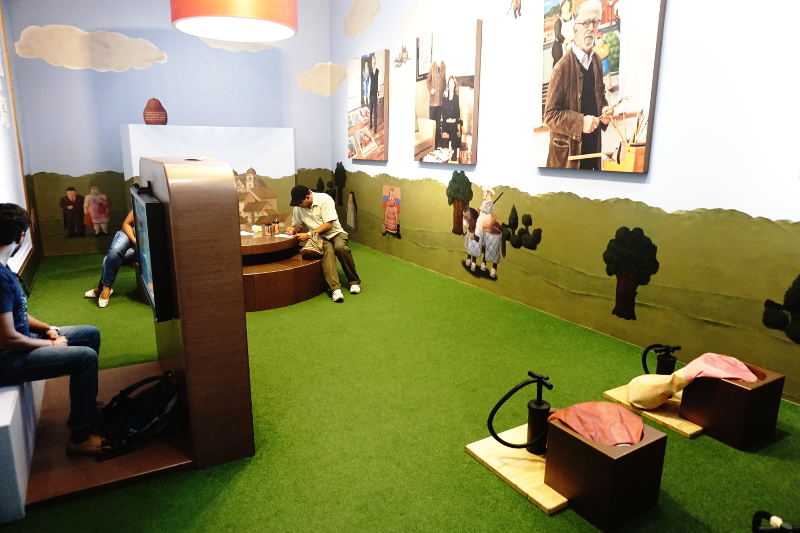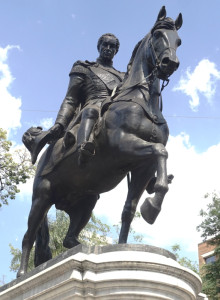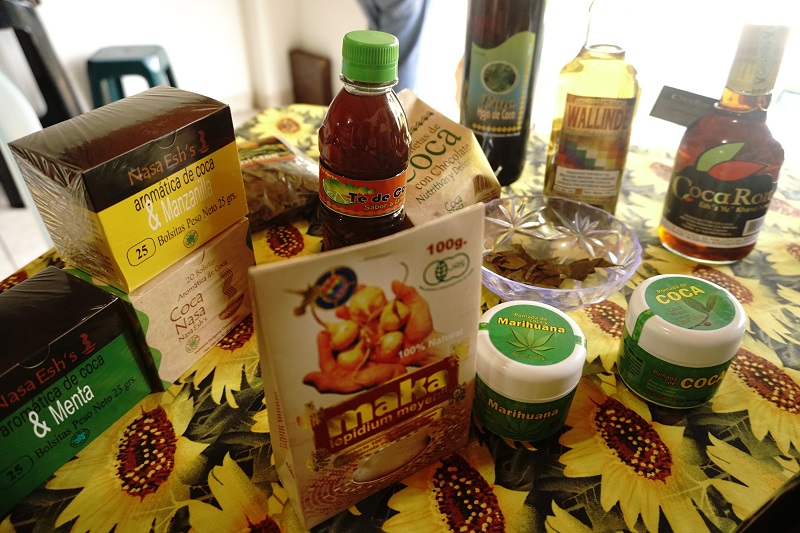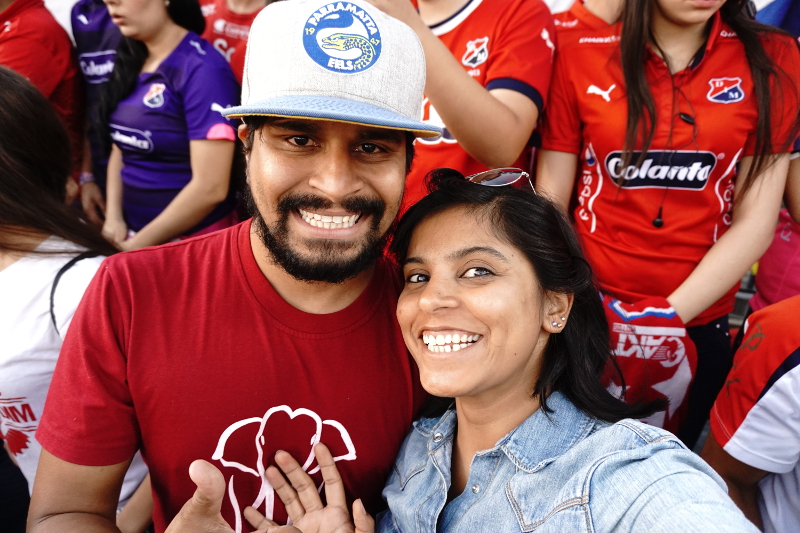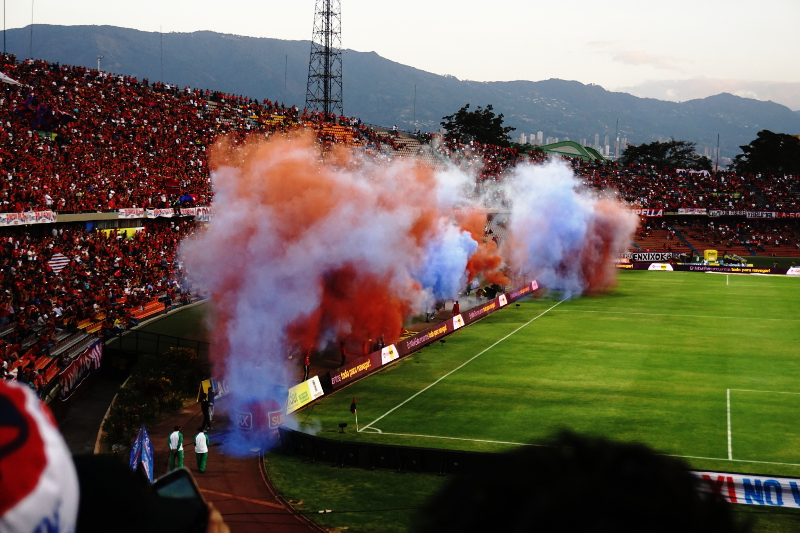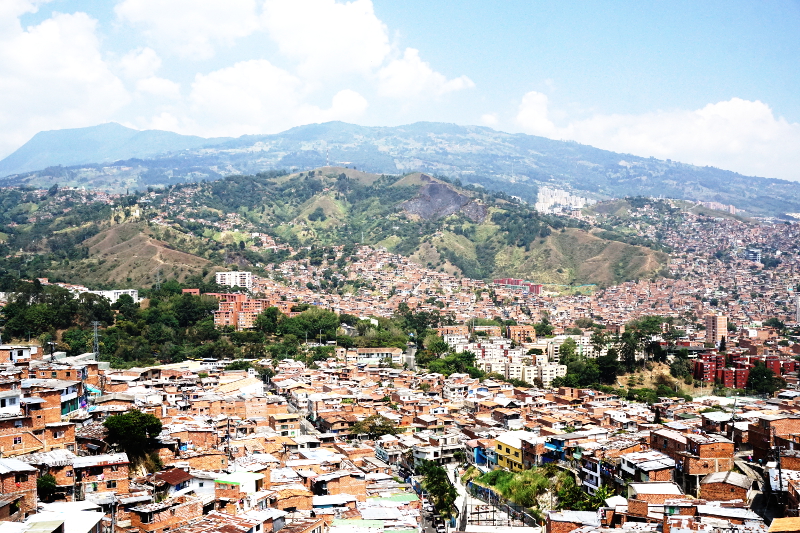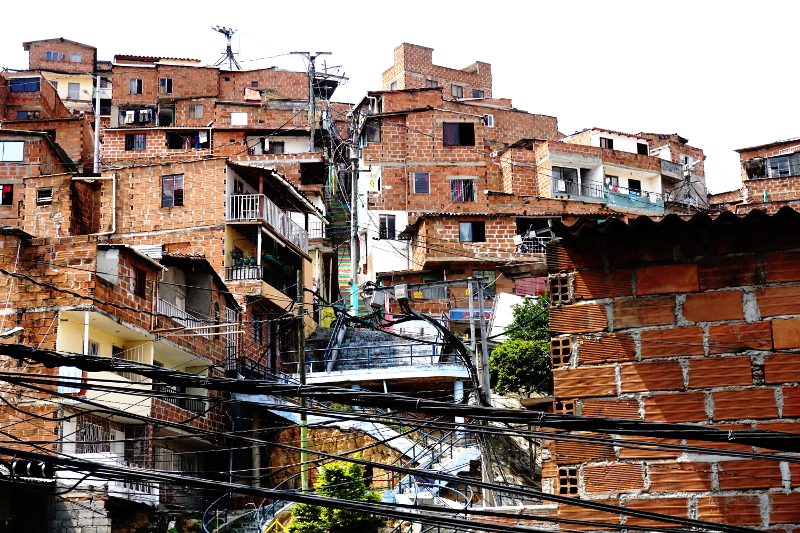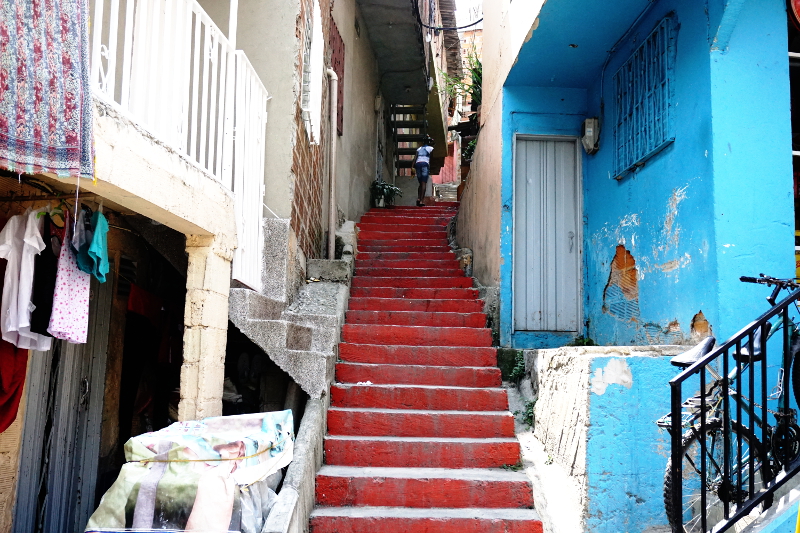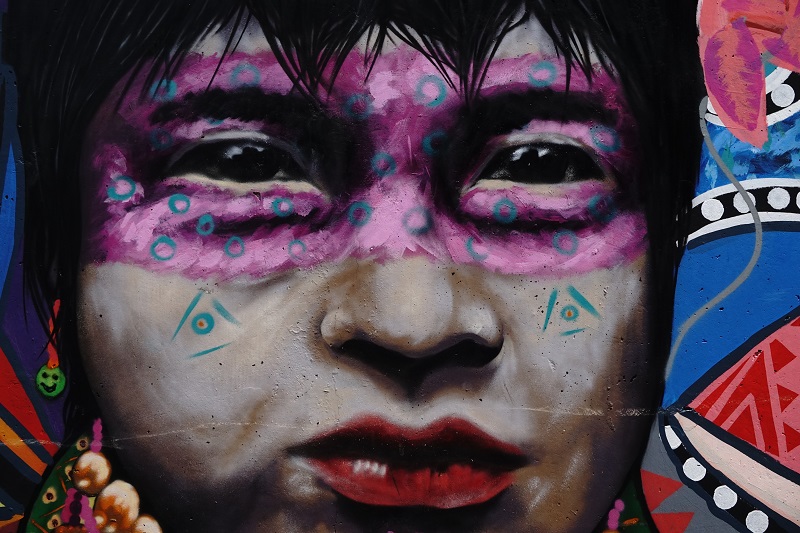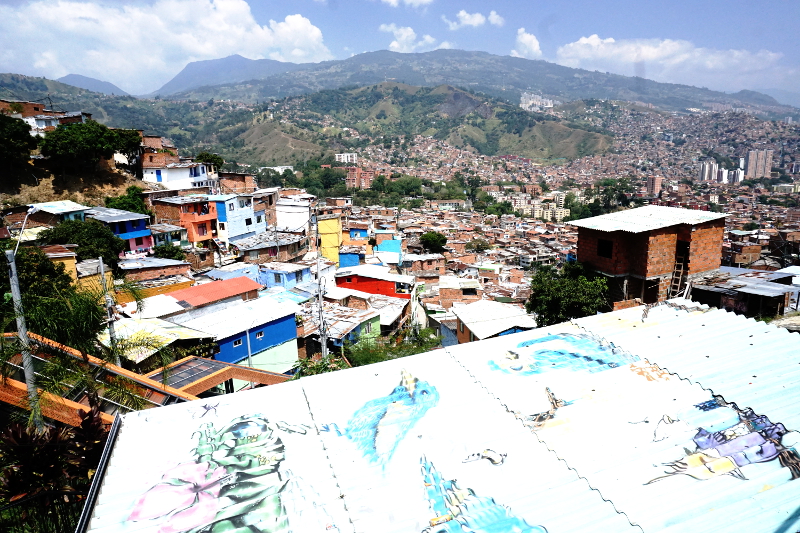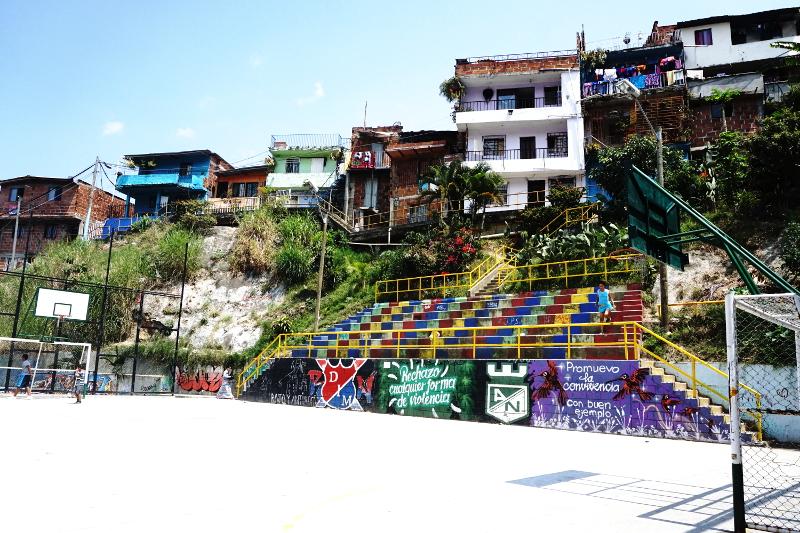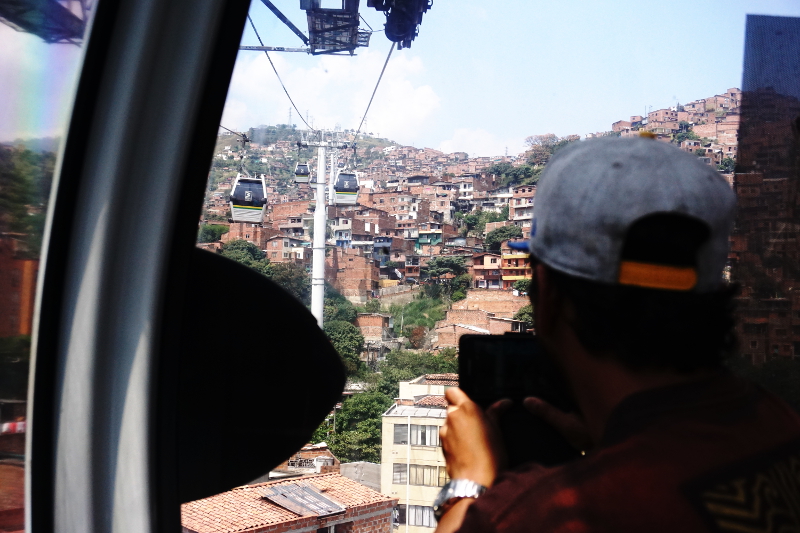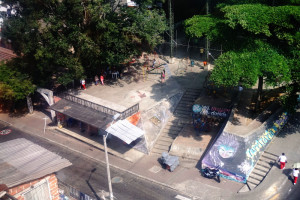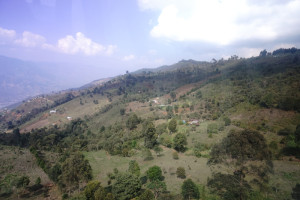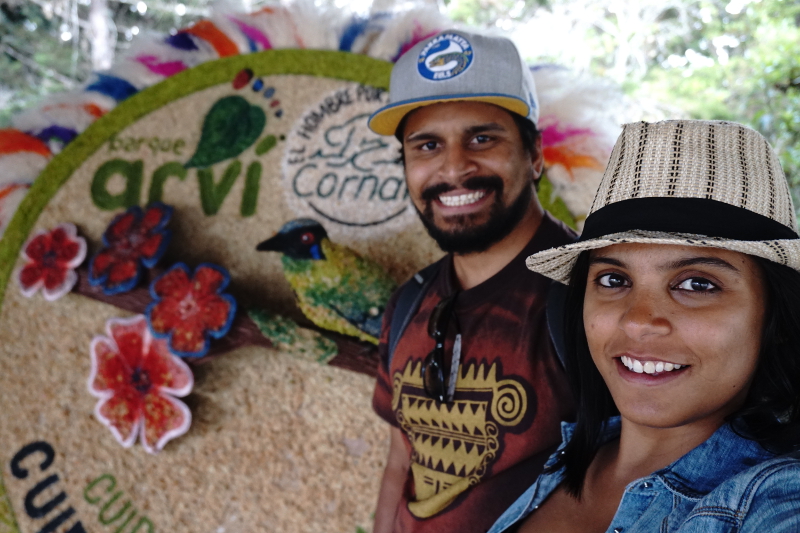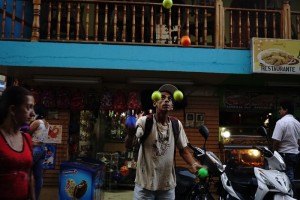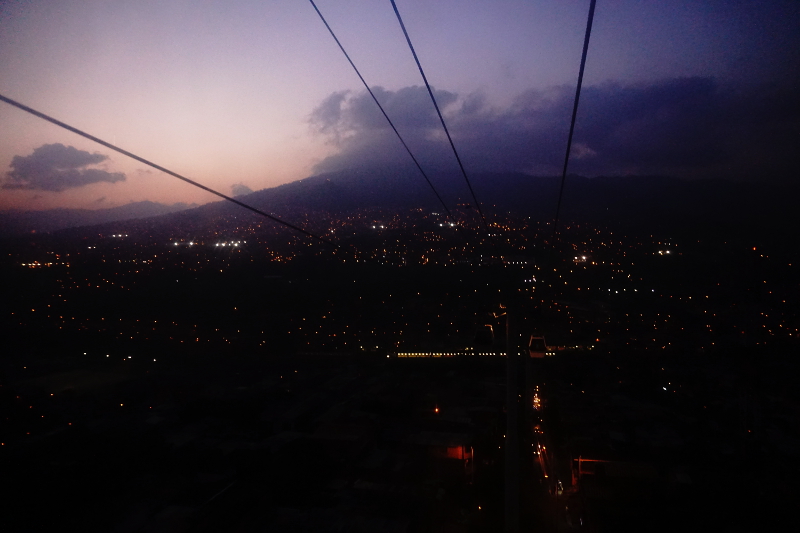Leaving Guatape, we headed towards Salento. Before we get into everything Salento, we wanted to share our experience at one of the most amazing parts of Colombia, Valle Del Cocora, Cocora Valley. It is close to Salento in the Quindio province of Colombia. It is famous for its beautiful hills and the Colombian National Tree – Wax Palm, known as Cocora in espanol.
Getting to Cocora Valley
There are plenty of Willys going to the valley at set times during the day, though based on observation, they usually ride off once they have 10 passengers – 2 sitting in front, 6 at the back and 2 standing outside! Willys are old jeeps bought from the army and repaired. They usually have a silver horse on the bonnet similar to the Jaguar on the Jaguar brand.
 The drive costs 3,900 pesos (USD 1.3) per person, takes approximately 30 minutes and is quite scenic. Along the way there are plenty of dairy farms and grazing pastures with cows sitting and chewing cud.
The drive costs 3,900 pesos (USD 1.3) per person, takes approximately 30 minutes and is quite scenic. Along the way there are plenty of dairy farms and grazing pastures with cows sitting and chewing cud.
The jeep drops you off at a fork in the road which is the start of the trail. On the right is a dirt road which takes you to Estrella La Agua and Finca Acaime. If you are interested in doing the complete loop that takes about 5 hours, head this way.
On the left, there is a gravel road which goes to farms surrounding the palm trees. It is also possible to do the loop in this direction, though you will see the Valley of Cocora as one of the first things. Then, you can either continue to hike to Finca La Montaña or return. This route is recommended if you just want to visit the Valley of Cocora without doing the loop. The walk to the valley is about 40 mins.
Rural Beauty
We had decided to do the complete 5 hours loop and so took the path towards Finca Acaime from the fork. The trail was uneven and rough with rocks, horse shit and large puddles. We had bought water resistant shoes from Armenia only because we had heard about the rain and the puddles on the trail. Those shoes paid off!
Despite the difficulties, the trail was scenic though mostly uphill. Lush green pastures lined both sides of the trail with the hills having wax palms. In addition, there was a stream coming down the mountains which provided the background music for the trail. We were lucky to get blue skies here which made the view simply stunning.
Tip: Ignore the signs to Estrella La Agua, unless you are interested in additional 2 to 3 hours of hike.
Hiking Through Forest
Further on, the trail led higher into the hills and came a hike through a forest. There was very little sunshine and a lot of water around. At times, it was hard to find the trail and we had to split up and search.
The other interesting thing on the trail were the bridges created over the stream. While we were there, the stream was only small and it was possible to cross it on foot. However, during the rains the stream might be a torrent. Hence, the bridges. These bridges were made of metal ropes and wooden pallets. Walking on it was fun and dangerous at the same time as the bridge would start swinging in both direction.
After the 6th flimsy bridge, there is a fork again. The path on the right leads to Acaime, the spot with humming birds and drink, while the path on the left leads to Finca La Montaña. We decided to head to Acaime first, relax a bit and then return towards Finca La Montaña.
In total, we crossed 6 bridges and 1 wooden log bridge twice during the complete loop. Believe me there were some nervous moments.
Humming Birds
We walked to Finca Acaime which was a farm and a shelter for the humming birds. Various varieties of humming birds and other small birds live in the valley forest. Humming birds were just fluttering around everywhere!
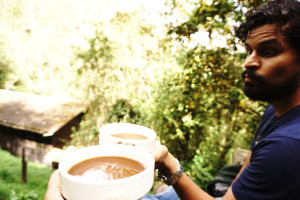 The cost to enter the finca was 5,000 pesos (USD 1.5) but they provided a drink, a place to sit, relax, watch the birds and take in the beauty of the area. As an added extra, some coati ant-eaters came in to have some water. Cute guys!
The cost to enter the finca was 5,000 pesos (USD 1.5) but they provided a drink, a place to sit, relax, watch the birds and take in the beauty of the area. As an added extra, some coati ant-eaters came in to have some water. Cute guys!
Tough Climb
We stayed half an hour at Acaime and then headed back towards Finca la Montaña. We should have guessed from the name that we were literally climbing up the mountain. The climb was strenuous and we had to take a break after every few minutes. The climb up is tough but not technically challenging. Just remind yourself that the climb is worth it!
After 30 minutes of blood, sweat and tears climbing up a mountain, we reached Fina la Montaña. There wasn’t a lot there except the amazing view, lots of tourists doing the loop and a small shop. The best thing though was the rest of the way to Cocora Valley was downhill. Finally!
Walking Down to Cocora Valley
The road from the finca was a gravel road built on the side of the mountain. At first, we didn’t see much. A little view of the valley here and there. After about half an hour on the road, we got our first glimpse of the Cocora Valley with the clouds rolling in and palms standing mighty tall.
As we went further, we came to a view point high on a rolling green hill right in the middle of the palms. Being surrounded by the palms overlooking the valley, we realised that we were in the best looking place in Colombia. We were finally viewing the Cocora Valley.
That feeling continued as we finally saw what a cloud forest looks like. The clouds rolled in and covered up the valley slowly. Distant thunder, forest, high trees, rolling hills and clouds. Ah, beauty of nature!
Our final stop was alongside the valley which had a few farms over the green hills and hundreds of palm trees. The beauty of this stretch of the valley is hard to explain. The farm animals, the huge palms, green hills and the clouds. Photographs may capture the scene but they certainly can’t capture the feeling one gets after trekking through 10 kms of forest and mountain.
Having said that, we took lots of photos and videos in Cocora Valley as we were sure we wouldn’t see anything like this again. We walked along the hills on the gravel road, which led us to where we had started. Surely, a complete loop!
As we jumped in one of the Willys ready to head back to Salento, the skies opened up. Luckily, we avoided the rain as we left the valley. Definitely another highlight of the trip!
Estimated Times and Advice
We had heard that the Cocora Valley loop is about 5 hours long. However, we were unsure about the fitness needed for that time. We are pretty unfit at this moment of our trip and we managed to complete the loop in just over 5 hours. So I suppose, if you were fit, you could complete the loop in 4 hours.
Also, wear steady shoes for the hike. There is lots of mud and stones around. Water-roof shoes or rain boots (these can be hired at the shops where the loop begins) are a must.
It is recommended to start your day early so you can enjoy the valley as the clouds roll in. But if you delay, you may encounter rain. We were at the Salento Square at 7:15am, and managed to start our ride in Willy towards the valley at 7:25am. We were on the loop trail by 8am.
Lastly, dress comfortably. In the morning it is quite chilly, but 15 mins into the trail, we had to get rid of our jackets. We recommend wearing comfortable, light-coloured t-shirt with a jacket that can protect you from chills and rain. Also, carry enough water and some snacks, such as nuts, for the trail.
Here are our times:
Start to Finca Acaime – 1 hour 50 minutes with stops
Halt at Finca Acaime – 30 mins
Finca Acaime to the fork that leads to Finca la Montaña – 20 mins (remember you need to cross the wooden log bridge only)
From fork to Finca la Montaña – 35 mins of slow but steady climb up the steep mountain
Finca Acaime to Finca la Montaña – 55 mins in total
Halt at Finca la Montaña – 10 mins
Finca la Montaña to end of loop – 1 hr 45 mins with many halts
Total time – 5 hours 10 mins


